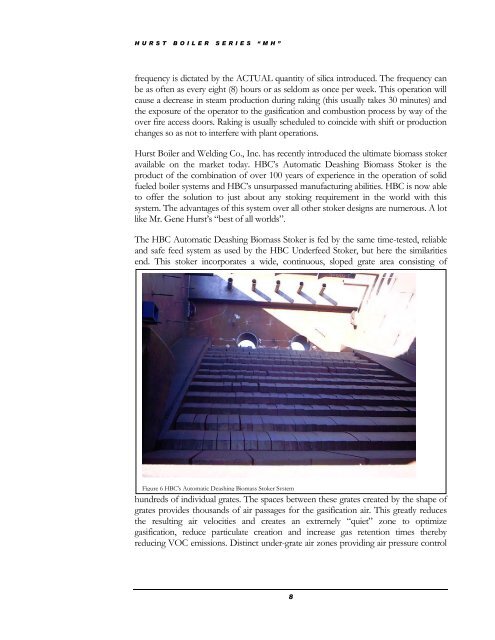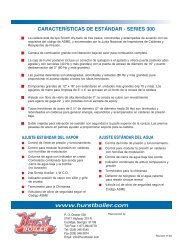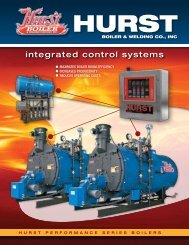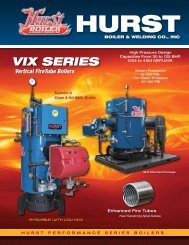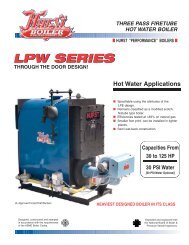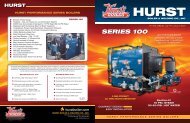Component & System Guide - Hurst Boiler
Component & System Guide - Hurst Boiler
Component & System Guide - Hurst Boiler
Create successful ePaper yourself
Turn your PDF publications into a flip-book with our unique Google optimized e-Paper software.
H U R S T B O I L E R S E R I E S “ M H ”<br />
frequency is dictated by the ACTUAL quantity of silica introduced. The frequency can<br />
be as often as every eight (8) hours or as seldom as once per week. This operation will<br />
cause a decrease in steam production during raking (this usually takes 30 minutes) and<br />
the exposure of the operator to the gasification and combustion process by way of the<br />
over fire access doors. Raking is usually scheduled to coincide with shift or production<br />
changes so as not to interfere with plant operations.<br />
<strong>Hurst</strong> <strong>Boiler</strong> and Welding Co., Inc. has recently introduced the ultimate biomass stoker<br />
available on the market today. HBC’s Automatic Deashing Biomass Stoker is the<br />
product of the combination of over 100 years of experience in the operation of solid<br />
fueled boiler systems and HBC’s unsurpassed manufacturing abilities. HBC is now able<br />
to offer the solution to just about any stoking requirement in the world with this<br />
system. The advantages of this system over all other stoker designs are numerous. A lot<br />
like Mr. Gene <strong>Hurst</strong>’s “best of all worlds”.<br />
The HBC Automatic Deashing Biomass Stoker is fed by the same time-tested, reliable<br />
and safe feed system as used by the HBC Underfeed Stoker, but here the similarities<br />
end. This stoker incorporates a wide, continuous, sloped grate area consisting of<br />
Figure 6 HBC's Automatic Deashing Biomass Stoker <strong>System</strong><br />
hundreds of individual grates. The spaces between these grates created by the shape of<br />
grates provides thousands of air passages for the gasification air. This greatly reduces<br />
the resulting air velocities and creates an extremely “quiet” zone to optimize<br />
gasification, reduce particulate creation and increase gas retention times thereby<br />
reducing VOC emissions. Distinct under-grate air zones providing air pressure control<br />
8


